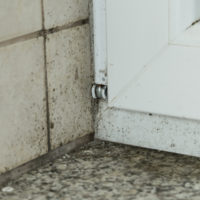Not All Black Mold is Toxic, and Not All Toxic Mold is Black

Let’s face it. Mold has a bad reputation, and deservedly so (penicillin and blue cheese notwithstanding). The greatest fear and loathing of all is reserved for black mold, but why? Maybe just saying “mold” isn’t scary enough, but “black mold” reminds us of the Black Death or the Black Plague of the middle ages. Black mold truly can be toxic and quite dangerous to your health. But the truth is that not all black mold is toxic, and not all toxic mold is black. Learn more about mold below, but remember, if you have mold in your home of any color or type, the best move is to just get rid of it.
Mold is a Mold is a Mold
Mold itself is not toxic. Some molds, however, are toxigenic, which means they are capable of producing toxins, mycotoxins to be exact. What people commonly call black mold is a specific species of mold known as Stachybotrys chartarum or Stachybotrys atra, and it may look black or greenish-black. According to the U.S. Centers for Disease Control and Prevention, this particular type of mold is most likely to grow on material that has a cellulose content and a low nitrogen content and that has been exposed to constant moisture, such as from flooding, leaks or simply excessive humidity.
There is really no reason to treat black mold differently from any other type of mold you find growing in your home. Use the same precautions and follow the same steps to remove the mold, no matter what kind it is. Too much mold of any sort in the home can cause health problems even in healthy people, from itchy, watery eyes and skin conditions to serious upper respiratory infections. People with allergies, asthma, lung disease, immune disorders, or people with weaker immune systems such as the very young and the elderly, are particularly susceptible to falling ill from mold exposure.
To Test or Not to Test
If you only suspect there might be mold in your home and you want to be extra cautious – for instance, if you know there has been water damage or leaky pipes behind the walls – the only way you will know if mold is present is if you test for it. Remember though, mold is naturally occurring all around you, so what you are testing for is not simply the presence of spores in the air, but a high concentration of mold in the air or in a section of wall, carpet or flooring.
Testing for mold can be done by purchasing a do-it-yourself kit from the home improvement store, although you will need to take samples, send them to a laboratory for testing and await the results. You can also call a mold remediation company out to test your house for mold. These companies are typically quite expensive, and guess what? If you call out a mold remediation company to test your home for mold, chances are they will find it and recommend an expensive course of treatment. If you are experiencing ill effects that you think may be due to mold, having your home tested by a reputable company may be worthwhile. If you aren’t experiencing any symptoms, save your money because there is really no need to test your home for mold “just to be on the safe side.”
If you can visually see mold, or if you can smell it in your ventilation ducts or coming from under the sink or behind the walls, it really doesn’t matter what kind it is. You already know you have mold, so further testing is not really necessary. What you want to do now is get rid of the mold, for the sake of your health, your home value, and your peace of mind. Just make sure you understand proper mold remediation tips so that you accomplish the work safely.



